#Tama river
Text

A Spring Night's Walk Along the Tamagawa:
Kanagawa prefecture from the Tokyo side.
Small Town Tokyo: Tamagawa
#original photographers#photography#photographers on tumblr#tokyo nights#Tamagawa#tama river#japan#tokyo#small town tokyo#tokyo life#urban nature#nature in tokyo#spring flowers#springtime#springtime in tokyo#kanagawa#city lights
73 notes
·
View notes
Text

Tokyo, 1989
Tama River, Tokyo, Japan.
日本 多摩川 小田急線
Photography by Michitaka Kurata
#japan#tokyo#odakyu#odakyu line#odakyu train#tama river#kanagawa#kawasaki#photography#black and white photo#blackandwhite#b&w#35mm#35mm film#kodak#nikon#1989#日本#東京#川崎市#小田急#小田急線#小田急電鉄#ロマンスカー#多摩川#コダック#白黒写真#白黒フィルム#モノクロフィルム#モノクロネガフィルム
304 notes
·
View notes
Text
Why don't you enjoy cafe in the nature and Sake tasting?
Why don’t you enjoy cafe in the nature and Sake tasting?
Why don’t you enjoy cafe in the nature and Sake tasting?
Hi I’m Nobu, I like traveling overseas and in Japan, visited 25 countries!
I’m a National Government Licensed Guide Interpreter of English for 8 years.
I show you hidden Japan which you have never seen and heard of!
Cafe in the nature Sawanoien garden
I went to Sawanoien garden.
Sawanoien is a garden facility opened by the Ozawa Sake…
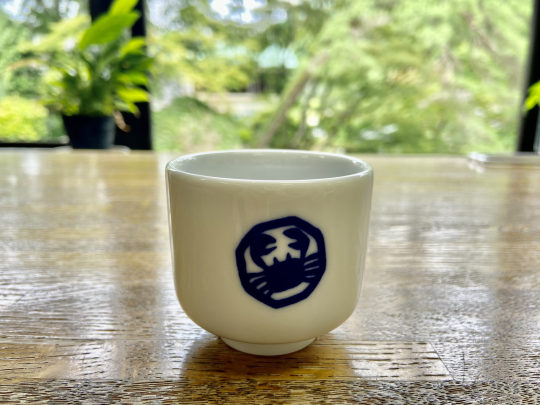
View On WordPress
1 note
·
View note
Text
Opening up lets in the light
(Book (Jumbo Jumble) - November 6)

Tama River (Mitake (Oume), 30 minutes, 2009)
Okutama is the mountainous area which lies in the northwest part of Tokyo “Prefecture.” Hiking trails abound in these mountains, and cater to both beginners and advanced hikers alike. This picture is on the short river walk (about 1 hour) running along the Tama River between Ikusabata Station and Mitake Station. The colorful maple trees in around the end of November make this a truly magical place, and there is an outdoor Japanese sake establishment where you can sit out and have some sake while enjoying the view. Wonderful for a leisurely stroll, or you can incorporate it into a longer hike in the mountains if you please.
0 notes
Text
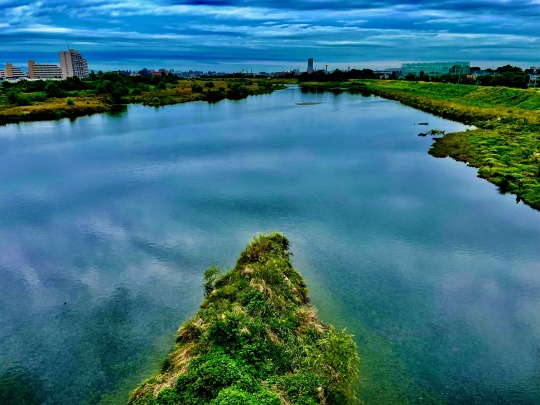
В системе верхних дыхательных путей евстахиева труба (правая, левая) (также называемая евстахиевой трубой или глоточно-барабанной трубой) представляет собой трубку, соединяющую полость среднего уха с носовой частью глотки (носовой глоткой). Одни образуются из кости, другие из хрящевой и фиброзной ткани, выстланной слизистой оболочкой. У взрослых трубка имеет длину около 36 мм и сужена в месте соединения со средним ухом. Протоки закрыты большую часть времени, но открываются во время глотания и зевания. Этот механизм уравнивает давление в среднем ухе с давлением снаружи
地球の表面 水面から大気を経て、空が水面に描かれる。緑がコントラストを作り出す。
#jordens axel#pohotography#iphone#landscape#japcnese pond turtle#l’ll go in this way#free falling#Tama river#odakyu#Savae city
0 notes
Text
sobs with twitter follower (drunk) over a duck family going on a treacherous journey on tv......
#they had to go through train tracks and so much traffic......#like 1.5km i think?#all the ducks (mom+12 chicks) safely got to tama river tho#with the help of locals and police officers#- shadow
2 notes
·
View notes
Photo




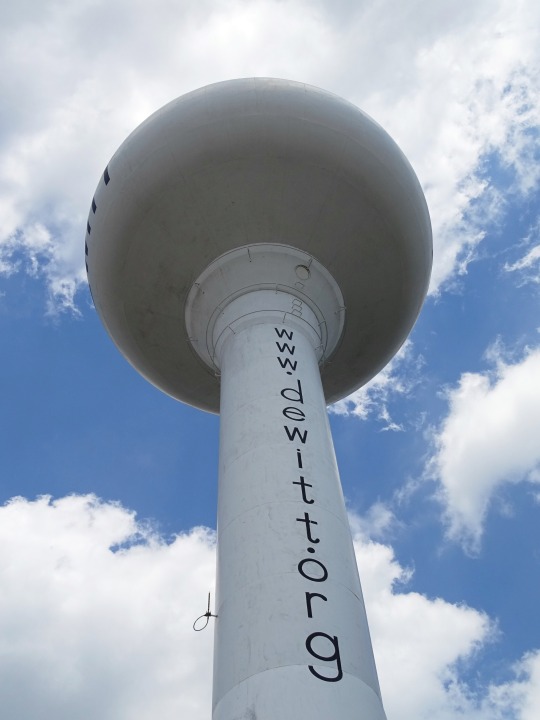


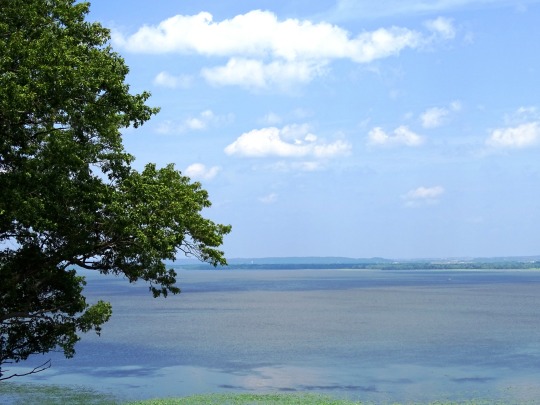
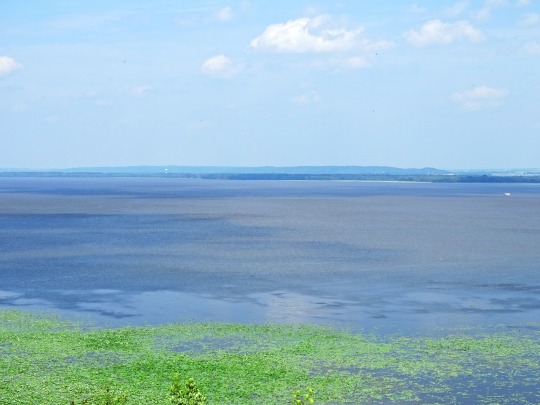

Clouds (No. 848)
DeWitt, IA (five pics)
Tama, IA (two pics)
Eagle Point Park, Clinton (three pics)
#Lincoln Highway Bridge Park#Tama#Iowa#summer 2019#travel#vacation#road trip#architecture#cityscape#engineering#Art Deco#small town#USA#original photography#I really love the first pic#Clinton#Eagle Point Park#landscape#countryside#Mississippi River#river bank#flora#nature#water tower#tourist attraction#landmark#Midwestern USA
0 notes
Photo
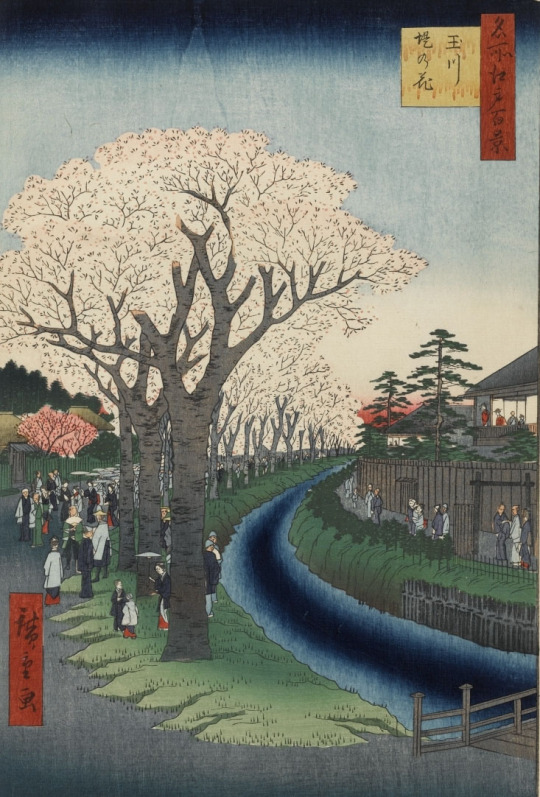
Utagawa Hiroshige: Cherry Blossoms on the Banks of the Tama River
426 notes
·
View notes
Text
youtube
today we lost the great Efeso Collins, during a charity event to raise funds for clean drinking water for children in the pacific. here is his incredible parliamentary maiden speech from just last week (transcript below). i encourage you to listen, and if you can, donate to childfund's water fund here
Tēnā koe, Mr Speaker. Mai i ngā hau o Ōtāhuhu-nui-a-Rangi, o Maungarei, o Motukaroa; mai i ngā awa o Hikuwaru, o Tāmaki e rere ki te Waitematā, kei te Mānukanuka-o-Hoturoa, ko Kaiwhare, ko Taramainuku kua tau, kua tau ki ngā whenua o Ngāti Toa Rangatira, o Taranaki Whānui ki Te Ūpoko o Te Ika. Tēnā anō tatou.
[From the winds of Ōtāhuhu, of Mount Wellington, of Hamlin's Hill; from the rivers of Hikuwaru, of Tāmaki flowing to the Waitematā, to the Mānukau Harbour; Kaiwhare and Taramainuku have arrived, have arrived to the lands of Ngāti Toa Rangatira, of Taranaki Whānui in the Wellington region. Greetings to us all.]
E fakatālofa atu ki te māmālu o koutou na tamāna ma na mātua, vena foki na uho ma tuafāfine kua mafai ke fakatahi i te po nei. Vikia te Atua ko tātou kua mafai ke fakatahi venei. Mālo ma fakafetai.
Fai mai ina ua teʻi ae Iakopo i le mea sa moe ai, ona ia fai ane lea, e moni lava e i ai Ieova i le mea nei. E moni lava e i ai Ieova i le mea nei. Faafetai le Atua aua e le faaitiitia lou viiga. Ua ifo i ati malie tuʻumoega o le taeao le sa tafa i vanu tafaoga o manu sisina, ae sa faalepa le au pea, sa fili ma le manoa le fetu taʻimatagi, ae sei faalaolao le puli matagi aua ua nofoia vao tutuʻi i le malumalu ma nuʻu malumau o le maota.
Ou te le fagota la i le sao aua ua uma ona fili le utu ma uu le vao fofou. Fai mai le matematega nai tumua, ua pei o se iʻa e moemauga o le atuolo, o foliga matagofie ia ma le maualuga, maualuga lava o lenei aso aisea, ae a lea ua malutaueʻe le tiʻa sa maluʻia, ua tapu lalaga foʻi le vaʻa o le Tuimanʻua mamana ua atoa laʻau i fogaʻa.
Faafetai le Atua le Tama, le Alo ma le Agaga Sa, aua sa tu i Fagalilo tapaau o le alataua, ae sa matemate foʻi aiga sa Tagaloa pe tua ma ni a lenei aso. Ae faafetai i le Atua, aua ua tepa i ula, tagaʻi i ula, foʻi atu lou viiga e faavavau. Faafetai i le tapuaʻiga a oʻu matua ma oʻu aiga, faafetai tele i matua o si oʻu toʻalua ma ona aiga, i le latou lagolago aemaise talosaga molia. Faafetai i uo ma e masani, aemaise o le paʻia o le aufaigaluega totofi a le Atua, i soʻo se fata faitaulaga—Faafetai tatalo. Ae faapitoaugafa saʻu faafetai i si oʻu toalua Finevasa Fia aemaise si aʻu fanau pele Tapuiela ma Asalemo faafetai tatalo, malo le onosaʻi. Ae tapuaʻi maia ma le manuia.
Mr Speaker, it is an indescribable feeling to stand up and address this House. As a son of Samoan immigrants who made the mighty Ōtara 274—Southside hard—their home, I am well aware of the giants whose shoulders I stand on and the masters whose feet I learnt at. The courage, foresight, entrepreneurial spirit, and hope of our ancestors who journeyed thousands of years ago through the vast waters of Te Moana-nui-a-Kiwa brings me here today.
My parents arrived in New Zealand in the early 1960s, told that this was the land of milk and honey. Dad started off as a taxi driver with South Auckland Taxis, and mum on the factory floor at New Zealand Forest Products in Penrose. We lived in a four-bedroom State house on Preston Road in Ōtara, and I attended local schools: East Tāmaki Primary, Ferguson Intermediate, and the great Tangaroa College. We're forever grateful for the State house that was our home for around 20 years, and the quality public education we received from our local State schools.
I did try my hand for a short period at a decile 10 school outside of Ōtara, but that experiment lasted only two weeks. It was during the time in the late 1980s, when families from poorer areas were being discouraged from going to local schools because they weren't considered up to scratch. I'm glad we changed course and decided to high school it in Ōtara, where the motto of our school was "Waiho i te tokā tu Moana"—"Steadfast like a rock in the sea".
Later, at university, I went on to write my Master's dissertation on brown flight, critiquing the Picot reforms that have wreaked havoc on our public schooling system. That period was also a challenging time for my family because we were being told by our teachers to stop speaking Samoan at home and only to speak English. My parents didn't want us to fail at school, so we were allowed to speak English at home and over time we stopped speaking Samoan altogether. In the end, I lost my language. I struggled, I was embarrassed, and I felt incomplete. Even speaking to you in Samoan this evening gives me major tremors.
There's a saying in Samoan: "E le tu fa'amauga se tagata"—no one stands alone, no one succeeds alone—and, for me, no one suffers alone. Over the past years, with the support of my family and friends, I've taken to trying to converse again in Samoan, reading more texts in Samoan, praying in Samoan, and sending our youngest to a local Samoan early childhood centre. Our beautiful language, Gagana Samoa, has returned to our home and is helping to overcome the inadequacy that had taken root in my soul.
As I speak this evening, I'm mindful of the many young people who are navigating these at times treacherous and unsettled waters in life, filled with so much potential, energy, and hope, yet too often misunderstood. In my time as a youth worker in South Auckland, I've spoken with hundreds of young people with massive dreams for the future. We need youth workers, we need social workers, and we need mentors to walk alongside our young people, and, yes, we want our youth to be responsible and caring and considerate. So it's our job in this House to resource the people and organisations who will model the behaviour to them that we expect, but who also won't give up on them and won't come with a saviour mentality.
Many of our societal challenges are driven by poverty. We can achieve greater social cohesion and lift our sense of belonging by addressing poverty. I've been honoured to run youth mentoring programmes for nearly 25 years—that's about how old I am—and to this day I mentor young people. When we undertook and published research on youth gangs some years ago, the youth we spoke to had the solutions and just needed the means to make it happen. Too many of our young people are filling our prisons, and it is wasted human potential. Give them the tools, the resources, and the means to make a meaningful contribution to the world, and they will. I was at a conference recently about the threats to democracy and an attendee spoke about their work in developing nations and used the familiar retort, "You can't eat democracy." And I couldn't agree more. This House, this centre of democracy, needs to do more to engage our people, all of our people, so that they can see this House is not just relevant but an essential part of their lives.
The greatest challenge facing our generation is climate change. The Pacific Islands nations are among the most vulnerable to climate change in the world. The world's continued reliance on fossil fuels, loss of coral reefs, rising sea levels, and increasing severe weather patterns means that our extended whānau in the Pacific are in immediate danger. We, as a collective, must do all we can to do as we say out south "flip the script". Truth is, those who've done the least to create this predicament are being the hardest hit. Our challenges, whether ecological, geopolitical, or cultural, are diverse, but we're bonded by the inextricable ties we have to our lands and our oceans. We've inherited philosophies, knowledge systems, and profound ecological wisdom that holds the answers and drives our collective resilience—from West Papua to Hawai'i. Our fight for a climate resilient, nuclear-free and independent Pacific remains as strong as ever. We are not drowning; we are fighting.
I haven't come to Parliament to learn—learning happens as a matter of course through reflection. I've come to this House to help. Helping is a deliberate act. I'm here to help this Government govern for all of New Zealand, and I'm here to open the door, enabling our communities to connect better with this House. During the election campaign, I spoke to people frustrated about their lot in life, scared for their and their children's futures, and feeling their dreams were slipping away. The people I spoke to expect the Government to do more and move faster. And I know that there are some in this House who believe Government is not the answer to these challenges and that less Government is better. But here's the thing: the Government cannot be a bystander to people suffering confusion and disenfranchisement. New Zealand must close the divide between those who have and those who have not, because the reality for my community is that those who have more money often wield more power, more health, more housing, more justice, more access, more canopy cover, more lobbyists with swipe cards, and more time. And the opposite is true for those who have fewer resources.
It's hard to be poor, it's expensive to be poor, and moreover, public discourse is making it socially unacceptable to be poor. Whether it's bashing on beneficiaries, dragging our feet towards a living wage, throwing shade on school breakfast programmes, or restricting people's ability to collectively bargain for fairer working conditions, we must do better to lift aspirations and the lived realities of all our people. To that end, I want to say to this House with complete surety that the neoliberal experiment of the 1980s has failed. The economics of creating unemployment to manage inflation is farcical when domestic inflation in New Zealand has been driven by big corporates making excessive profits. It's time to draw a line in the sand, and alongside my colleagues here in Te Pāti Kākāriki, we've come as the pallbearers of neoliberalism, to bury these shallow, insufferable ideas once and for all. And this, sir, is our act of love.
Paolo Freire, in his seminal work Pedagogy of the Oppressed, said love is an act of courage, not fear; love is a commitment to others. No matter where the oppressed are found, the act of love is a commitment to their cause, the cause of liberation. The most recent election campaign left many in our Māori communities bruised and targeted for the perceived privileges supposedly bestowed upon them. Shared governance is a rich concept about how we include those who've been excluded for far too long in the work of this House and the democratic institutions that are fundamental to our collective wellbeing. We are Tangata Tiriti and we have nothing to fear. As a New Zealand-born Samoan living in South Auckland, I've experienced, written about, and spoken about racism in this country. I've also been on a well-publicised journey in understanding the needs and views of our rainbow communities, and I have a long way to go. And my message to whānau who often experience the sharp end of discrimination—disabled, ethnic, rainbow, brown, seniors, and neurodiverse—is thank you for trusting us with the responsibility of facilitating a new discussion on how we move forward together and make possible what was once deemed impossible.
The American civil rights activist James Baldwin said, "Not everything that is faced can be changed, but nothing can be changed until it is faced." We commit to working across this House as a nation and with each other irrespective of our post code, income bracket, skin colour, or level of qualification attained. But, in order for that work, we must come with humility, the desire to listen, and dare I say it, maybe speaking last. If I was to inspire anyone by getting to this House and my work over the next three years, I hope that it's the square pegs, the misfits, the forgotten, the unloved, the invisible—it's the dreamers who want more, expect more, are impatient for change, and have this uncanny ability to stretch us further.
199 notes
·
View notes
Note
I just discovered your posts about AEIWAM and I'm already in love. I've loved Unohana for years and your post talking about her backstory in your fic is just.... /chef's kiss. (also I had no idea non-ADHD people don't get the euphoria of meeting someone who Gets It, this explains a lot).
I'm so excited by everything I've seen so far!
Cool because I added a lot more because I thought Unohana needed a Terrible Science Buddy and also Minazuki would be cool if it was a one of a pair of swords that are medications on how healing requires both creation and destruction- Minazuki's ray form heals by creating- she can replenish lost blood or grow new bones and tissues, but she can't destroy an infectious pathogen or pull out shrapnel. Minazuki's other form is... well, it's blood that digests an opponent if they don't dodge good enough. I think that Unohana actually needs to use both forms for them to work- the material consumed/destroyed by the blood form is where Minazuki gets the raw materials and energy for the healing ray form.
So I made up Sakukoji, her sister sword whose ray form destroys foreign and alien bodie within the body of a patient or remove excesses produced by the body, like cancer or excess calcification, but can't replace lost blood or close wounds like minazuki can. Sakukoji's second form looks more like an enormous fungal body that can change and add to the form of any living thing it touches. Sakukoji needs her second form to release all the toxins and excess matter she's built up.
The sisters are yin and yang to each other, each a force of creation or destruction, but with an element of the other as well, and both ultimately in service of the third force- preservation.
Sakukoji's weirlder is Tama Nikyu, a victim of an extremely aggravated act of plagarism. Here's an illustration of their froms:
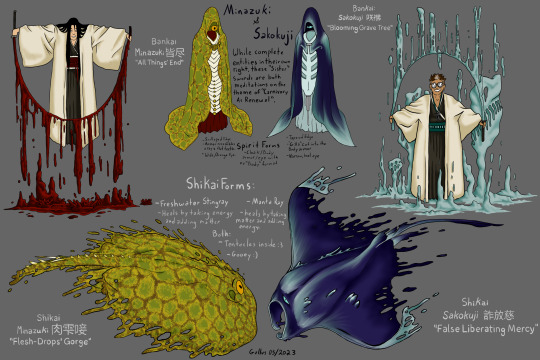
(please embiggen for details)
I made Minazuki look a bit more like a Short-tailed River Stingray because they're awesome, and Sakukoji looks like a filter-feeding manta because she kind of is.
Also. Gooey :)
#Retsu Unohana#yachiru unohana#Bleach#AEIWAM#an elephant is warm and mushy#Minazuki#Sakukoji#MAD PROPS to my friend Zaeze who figured out another double-meaning kanji set that matched the theme i was going for#also for like#being my assistant loremaster for the fic
197 notes
·
View notes
Text

Lunch Break at the Park.
Tamagawadaikouen.
Small Town Tokyo: Tamagawa
#original photographers#photographers on tumblr#tokyo life#tokyo#japan#tamagawadaikouen#small town tokyo#tamagawa#denenchofu#tama river#nature in tokyo#urban nature#urban life#urban landscape
75 notes
·
View notes
Text
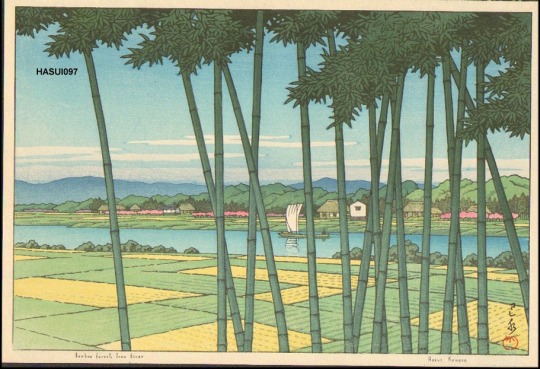
Kawase Hasui
Bamboo Forest, Tama River
1952
#kawase hasui#japanese woodblock#woodblock artist#woodblock art#woodblock print#woodblocks#woodcut#japanese art#japan#japanese print#japan beauty#japanese artist#japanese beauty#japanese prints#japanese#art history#modern art#asian art
145 notes
·
View notes
Text
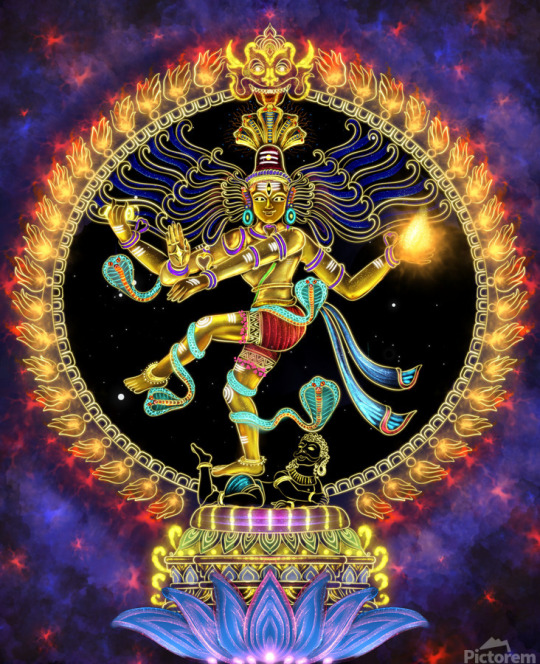
Shiva Nataraja ॐ
Symbolism of Nataraja
Nataraja as a symbol is a marvelous invention combining Shiva’s role as creator, preserver, and destroyer in a single image. Each of the elements in the image has a unique meaning to it.
The Damaru Shiva holds in his upper right hand is said to make the first sound of creation, the heartbeat of the universe, the Maya, the divine fire (Agni) on the upper left hand signifies the holocaust, with his lower right hand he makes Abhayamudra; the gesture that calms all the fear and the left-hand makes the gesture of Gaja hasta, the symbol of salvation and liberation.
Nataraja - Cosmic Dance
His right foot stamps on the dwarf figure, Apasmara Purusha, represent illusion and ignorance, leading humanity away from the truth. The matted hair spread during the dance. His energy and wilderness disperse; his lock contains a skull, a datura blossom, and a crescent moon depicting that Shiva is always present though he is invisible.
Ganga, the holy river, resides in his hair, which signifies creation and destruction. The two eyes portray the sun and the moon, and the third eye defines knowledge and insights. Together they symbolize an equilibrium of three Gunas- Sattva, Rajas, and Tamas.
In his Nataraja form, Shiva dances within a flaming halo (Prabha Mandala) that symbolizes time and is presented in a circle as it is cyclical and never-ending. Though the cosmic dance releases energy, passion, and wilderness, Shiva has a smiling face.
25 notes
·
View notes
Text
Me, trying to decide where the action of my latest WIP takes place in Karakura: *Searches Karakura map*
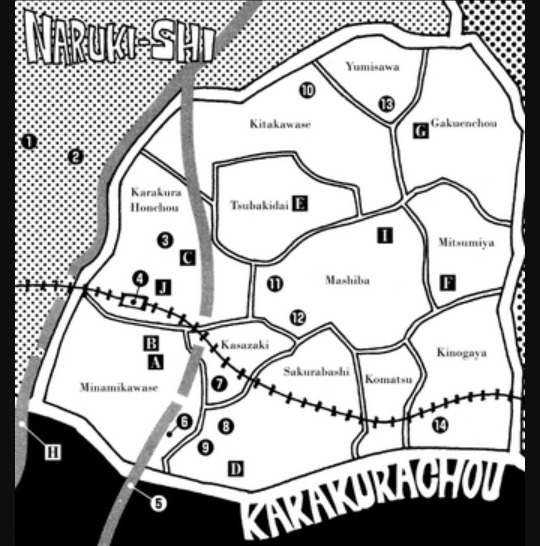
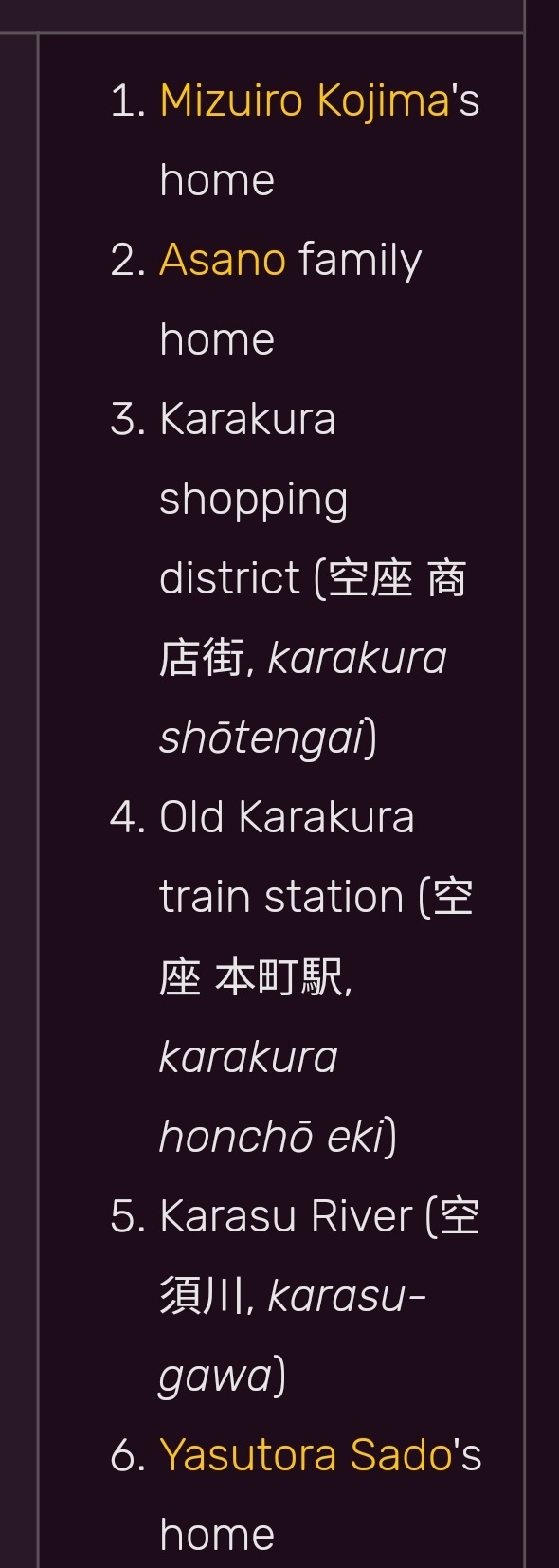

The map has all of these little things, so I screenshot what they mean.


Curious thing: Neither Keigo nor Mizuiro live in Karakura. They live in Naruki City, but apparently are allowed to go to school in Karakura? I don't know how the rules are in Japan, so...


So, around this area...

Cool!

Thing is, to belong to Tokyo, it needs to be beyond the Tama river...
So... Around Chofu and such?
Who knows! That's the problem with creating fictional towns and cities...
15 notes
·
View notes
Text
Disparate Wano thoughts in three parts:
Having the context of the full arc is great and helps to see the intent with so many aspects of the story Wano is telling.
Zoro and King
I love how Zoro and King view their positions in their respective crews. Zoro awakens conqueror's haki for his own reasons, while maintaining his promise to Luffy, in spite of becoming a conqueror himself. King has the name of a conqueror, though it was given to him by another. King only strives to serve Kaido, he isn't chasing any personal ambitions, gives up much of his individuality in the process, including his original name, Alber. Unlike Zoro, King has no best friend, no Kuina. King's lack of his own identity and goals is also expressed by his final attack being an imitation of Kaido's dragon form.
When King's and Zoro's final attacks clash, Zoro ultimately stands as the victor, not having given up any of his individuality in the process, and masters Enma as a result. Zoro's final attack isn't an imitation of any of Luffy's or of Oden's, in spite of wielding one of Oden's blades. He gives himself the title of King of Hell, and maintains his own ambition apart from helping his captain become Pirate King, while also honoring his promise to Kuina. All of the aspects which King stumbled over, Zoro surpasses and becomes a true king.
Bushido and Pride
No dancing around the issue, the samurai of Wano absolutely have a problem with trying too hard to be self sacrificial at times, Usopp is 100% in the right to call it out in 1036.
That was the whole deal with Ashura Doji's men going to Onigashima ten years too early, they went to their deaths for the sake of their stubborn pride, nothing more. They didn't free Wano.
When Hyogoro learns that Luffy defeating Kaido will cause Onigashima to crash in 1047, he pretty much immediately flips to "I have no desire to live, go ahead Straw Hat, defeat Kaido and send us all to our deaths." I love Hyogoro don't get me wrong, though all him accepting death then does is disrespect Luffy's and Chopper's prior efforts to save him. And it was disrespectful of Kin and Kiku asking Usopp to leave them, after his own efforts to save them, plus Kin was disrespecting the efforts the crew have already put in in prior arcs helping him.
Otama and Hunger
The way everything with Tama and Luffy's promise to her ties perfectly into the harm Kaido and Orochi caused to Wano.
When we meet her, Tama doesn't have food and feels her only options are drinking water from the toxic river or taking food from Tsuru and Kiku. She decides to drink the poison river water. Kaido/Orochi don't care that the weapons factories are causing anyone outside of the Flower Capital/Onigashima to not have safe food to eat, they are both hindered by their world views.
From Kaido's perspective, it's the fault of those who are too weak to stop him, so they don't deserve to eat. Family or not, he never tried to justify his reasoning, because "that's just how the world is." And he had given up on being the one to change it.
With Orochi, he hadn't given up in the same way and it's pretty strongly implied that he captured/forced Tama's parents to work in the Udon prison mines until they died. Orochi used his family name as a reason for his vengeance, though all through out his rule, he was treating other Kurozumis as disposable(as we learn from Tama's backstory,) or as puppets, in the case of Kanjuro.
Having the full picture of Wano adds so much Luffy's promise during Act One, to make Wano a place where Tama can eat as much clean and healthy food as she wants, now that we can see exactly how Kaido/Orochi both were keeping that from happening.
17 notes
·
View notes
Text
“Plank houses are good houses for people in cold climates with lots of tall trees(...) only people who don't need to migrate spend the time and effort to build these large permanent homes(...) only coastal tribes, who make their living by fishing, made houses like these.”

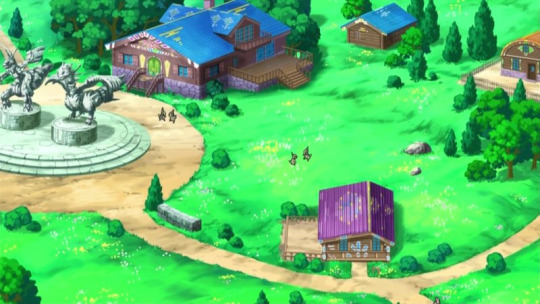

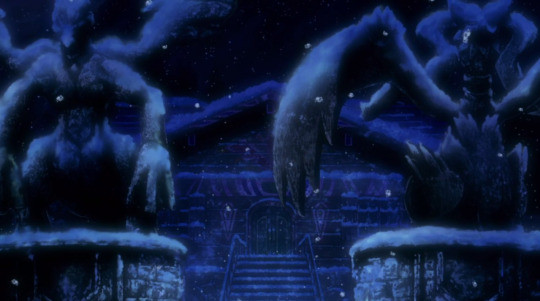

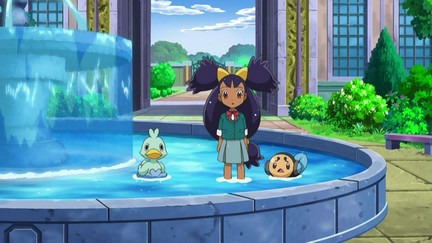

Iris at Opelucid Academy was ostracized for her "strange" behaviour like splashing around in the fountain or picking fruits from the trees to eat... she also had trouble studying from books, as it seems she mostly learned through an oral tradition in her village from the Old Matriarch/Village Elder before that.
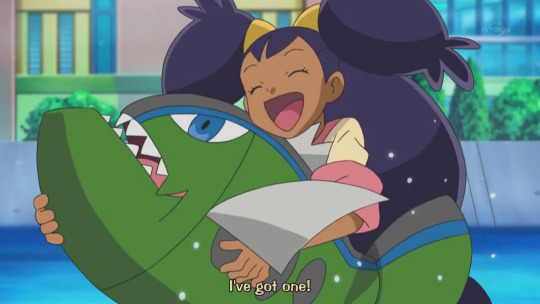
There's a scene in the fishing competition episode where Iris gets very, very bored waiting for a Water type to bite at her lure, so she just pulls up her sleeves, sheds a layer, and quickly and easily catches a Water type Pokemon on her own!
The Pokemon world is a fantasy one, but with analogous regions/countries to our world and the American region we're shown (Unova, largely based on New York, but blended with other aspects of the U.S., too, so we also see the Resort Desert, where in the anime, an abandoned mining town built during the Gold Rush is also shown… which would help explain the reservations....)


Both past (Champion Alder) and current (Champion Iris) Champions are Native--although Iris looks very different from the rest of the people in her village, so she's likely mixed... we'll likely never know because she seems to be a half-wild orphan, all her flashbacks of her life before Opelucid Academy are either among the forest Pokemon, with her childhood friend Shobu/Shannon, or with the Old Village Elder who taught her.

Alder is most obviously inspired by Natives of the Great Plains, who relied heavily on the buffalo (American bison)... unlike how cruelly they were whittled down in number in reality to starve the Natives, they still exist in the wild in great numbers in the Pokemon world, which tends to portray humans working towards a more utopic world, aiming for harmony with nature, having learned from past mistakes and wars



Satoshi Tajiri, after all, made the games to preserve the memory of the lost natural landscape of his youth which was paved over. Environmentalism and love of nature is at the heart of it (even if cynical fake fans see it as overglorified cockfighting because they do not see the trainer-Pokemon bond as more like coaches and athletes, do not see the Pokemon as highly sentient, or do not understand how they are shown in the anime to be very proud and battle for sport, often refusing to be captured unless a trainer first defeats them in battle and shows their strength & worthiness to train them).
As you travel from your idyllic hometown, you see more polluted cities, that create new monsters or alter existing ones through their pollution (Muk, Trubbish, Corsola->Cursola [a happy Water type becoming a sad Ghost type, bleached coral],) some species are hunted/poached to near-extinction (like the gentle Lapras), others were chased out of hospitable land by humans and forced to adapt and likely ultimately failed/went extinct (Zoroark->Hisuian Zoroark)...
As this lovely review by Tama Hero of the Red & Blue games describes: “The game asks you to be curious, learn, grow, & discover: that adults aren’t always right, even in positions of authority; learn how to be better than the adults that raised you; learn from their mistakes and maybe go on to make better decisions as you inherit this ruined earth.”"
youtube
Sources:
"The Ultimate Game Freak" TIME Magazine interview with Satoshi Tajiri. https://content.time.com/time/magazine/article/0,9171,2040095,00.html
http://native-languages.org/houses.htm
Also: Drawings of Chinook Plankhouse by a Chinook Tribal Councilman. http://publichistorypdx.org/projects/chinook/river-chinook-plankhouse/
#pokeani#Pokemon Best Wishes#Unova#trainer Iris#Champion Alder#Dragon Village#Village of Dragons#Pokemon#Champion Iris#Adeku#Alder#Iris#long post#image heavy *#analysis#it's not solely#character analysis#but there is a little bit I guess
134 notes
·
View notes